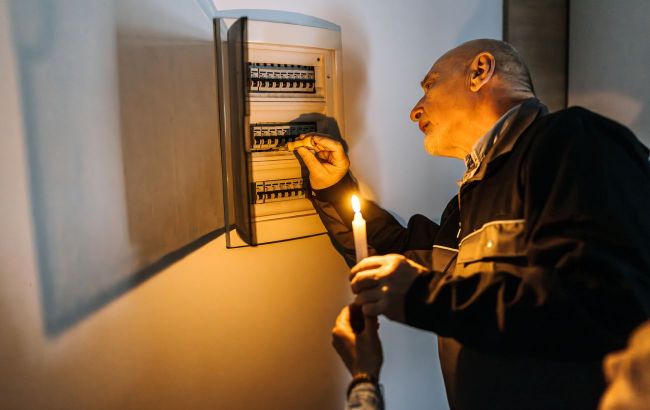No gas, no funds: Experts say what can prevent winter blackouts in Ukraine

The search for funding to purchase gas and provide regions with small power plants should become key tasks for the Ukrainian government in preparing for the next heating season, said the experts, Oleksandr Kharchenko, Director of the Energy Research Center, and Hennadii Riabtsev, Director of the Psychea Center.
Two headquarters are already working to prepare for winter
The Ukrainian government has already begun preparations for the next heating season. A special headquarters was created under Deputy Prime Minister for Restoration Oleksii Kuleba. It will coordinate the efforts of central and local executive authorities. Regional headquarters will also be formed to ensure winter preparedness on the ground.
This is the second headquarters involved in preparing for winter. The first, the Anti-Crisis Energy Headquarters, has been operating since 2020 and is chaired by Prime Minister Denys Shmyhal.
Ukraine managed to get through the last heating season without major shocks to its energy system. While electricity shortages did occur during cold spells, power outage schedules for the population were not implemented. In some regions, only industrial enterprises were disconnected from the power supply.
By this spring, the country had managed to restore 5 GW of capacity destroyed by Russian attacks and added another 835 MW through distributed generation.
However, gas reserves proved insufficient. Ukraine was forced to import gas at high winter prices. As a result, the season ended with a record-low level of underground gas storage.
Last winter, Ukraine entered the season with 7.7 billion cubic meters of active gas reserves, mostly from domestic production, since there were virtually no imports in 2023. However, due to significant damage to gas infrastructure caused by Russia, production has decreased. As a result, Ukraine will need to import up to 8 billion cubic meters of gas before the next winter. Imports via a new route from Greece are expected to begin in June.
What’s already been done ahead of winter
To date, Ukraine has commissioned 130 MW of cogeneration capacity and 250 MW of thermal power from block-modular boiler houses.
In total, the country plans to add over 900 MW of such capacity in 2025. To finance these projects, more than €1.1 billion has been accumulated in the Energy Support Fund. These funds are expected to be used for purchasing energy equipment to restore and modernize energy infrastructure.
By the beginning of winter, all nine operational power units at Ukraine's three nuclear power plants are scheduled to undergo maintenance. Work is already underway at some sites.
Ukraine's central bank has even improved its forecast for potential electricity shortages in 2025, lowering its estimate from 4% to 3%.
Key risks and problems to be resolved before winter
The main risk in preparing for the upcoming winter remains the Russian attacks on the infrastructure. Recently, there have been no large-scale attacks on energy facilities. However, even without taking this factor into account, experts note that to see real improvement, a number of issues still need to be addressed - first and foremost, financial issues related to gas procurement.
"The key threat is the shortage of gas for the heating season (not considering military threats). We need to find 2.5 billion USD and purchase gas. The task is quite clear, but extremely difficult," said Oleksandr Kharchenko, Director of the Energy Research Center, in a comment to RBC-Ukraine.
Hennadii Riabtsev, Director of the Psykheia Center, believes that preparation for winter should focus on the security of critical energy infrastructure facilities. This includes production, generation, transportation, and distribution.
"We're talking about both active and passive protection from further attacks, especially of the system's key nodes," he noted in a comment to the outlet.
To reduce the risk of large-scale blackouts due to infrastructure damage, the expert believes it's necessary to increase the number of small power plants.
"I'm talking about small energy units with a guaranteed capacity of up to 10 MW, primarily cogeneration plants that run on local fuel and are connected to distribution systems," Riabtsev stated.
Special attention should also be paid to ensuring power supply for mobile communication networks, water supply, and wastewater systems. Additionally, the commissioning of all 280 cogeneration units and 145 block-modular boiler houses, which were provided to Ukraine free of charge last year, needs to be completed.
According to Riabtsev, cogeneration units, boilers running on liquefied petroleum gas, firewood, and coal should be delivered primarily to the most affected regions - Mykolaiv, Odesa, Kryvyi Rih, and Dnipro.
As reported by RBC-Ukraine, according to the memorandum with the IMF, Ukraine plans to import up to 4 billion cubic meters of gas for domestic consumption in 2025.
According to estimates by the National Bank of Ukraine, gas import costs will amount to $2.9 billion.
At the same time, there are currently no plans to change gas and electricity tariffs for the population.

